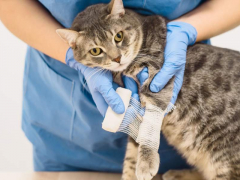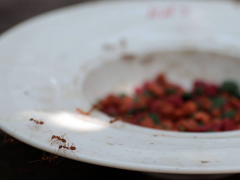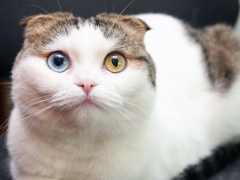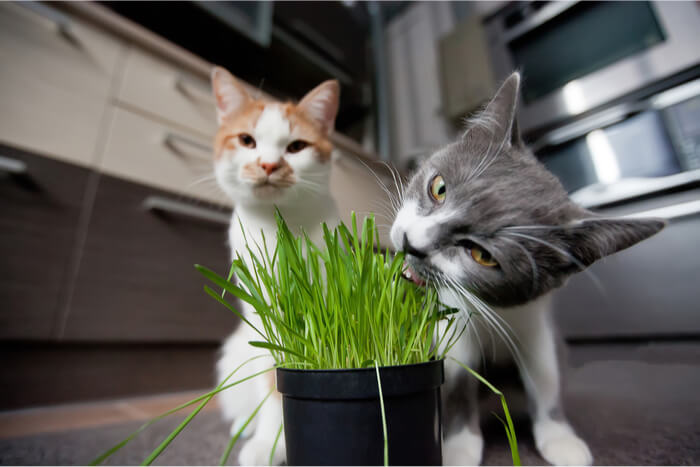
Shutterstock.com
Even though cats are carnivores, many cats like to nibble on plants or grass. However, eating grass and plant material isn’t always good for cats.
Some houseplants and flowers are toxic to cats, and grass from your lawn can contain dangerous fertilizers, pesticides and weed killer. Luckily, there’s a safe alternative: cat grass.
What Is Cat Grass?
Cat grass, sometimes called kitty grass, is a special cat-safe grass intended to be used as a treat or snack for your indoor cat. Cat grass can be purchased already grown, or you can buy kits with trays or bags of seeds for you to water and sprout yourself right in the container.
The term “cat grass” describes not one specific type of grass, but a variety of grasses that are safe and nutritious for cats.
Some popular varieties include wheatgrass, oat grass, rye grass, barley grass, alfalfa grass, and flax grass.
Cat grass is not the same as catnip (Nepeta cataria), which is an herb in the mint family that cats find intoxicating.
Read More: Catnip: What Is It and Why Do Cats Love It?
Where to Buy Cat Grass
You can find cat grass in more places than you might think.
Most pet-supply stores sell already-sprouted grass, as do many veterinary hospitals, grocery stores, hardware stores, and nurseries. You can also purchase kits to grow the grass at home.
Cat grass kits are available from online retailers like Amazon, Chewy and Petco, and come with everything you need to grow cat grass, including a container (tray, bag or box), soil, and seeds. All you need to add is water and sunlight.
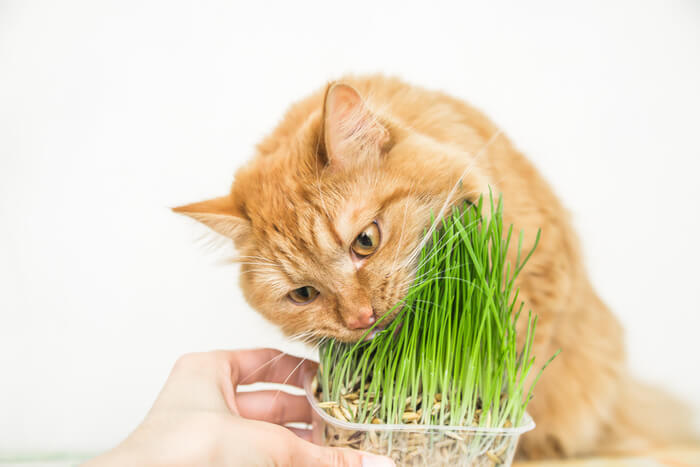
Many cats enjoy snacking on cat grass, which is safer than nibbling on your houseplants. Shutterstock.com
How to Grow Cat Grass
If you’re looking for simplicity, purchase a tray of cat grass that’s already grown at your local pet store. If you can’t find grown cat grass, buy a cat grass kit and follow the instructions on the package.
The directions may vary somewhat depending on the kit you buy.
Start by Dampening the Grass
To grow cat grass, you usually start by dampening the seeds with water and wait for them to sprout, which can take anywhere from a few days to a week.
Lightly Water Daily
Lightly water your sprouted cat grass daily. You want to keep the soil moist but not wet. Watering with a spray bottle can ensure you don’t use too much water. Place the cat grass in a warm spot in your house that gets indirect sun.
Avoid Direct Sunlight
Avoid placing cat grass in direct sunlight, which can burn the grass.
Let it Grow
Don’t let your cat eat the cat grass until it grows tall enough (about 4 to 6 inches high). It will take about one to two weeks for the cat grass to be ready for your cat to nibble.
Make Your Own Cat Grass Garden
Cat owners who have green thumbs may enjoy growing DIY cat grass at home without purchasing a specific cat grass product.
Start With Seeds
Simply buy cat grass seeds of any cat-safe grass (wheat, oat, rye, barley, alfalfa or flax), fill a container with potting soil, place the seeds on top and water lightly.
Choose Your Location
Make sure the container you choose is deep enough to allow the roots to grow and has holes for good drainage. Place the container in indirect sun and water lightly with a spray bottle every day until you see the seeds sprouting.
Wait Patiently
Your cat can enjoy the cat grass once it is 4 to 6 inches high.
You can grow one type of cat grass or mix cat grass seeds together to grow a variety. You might even try growing different types of cat grass in different containers to see which type of cat grass your kitty likes best.
Stagger the planting of your different grasses so you always have fresh cat grass ready for kitty to enjoy!
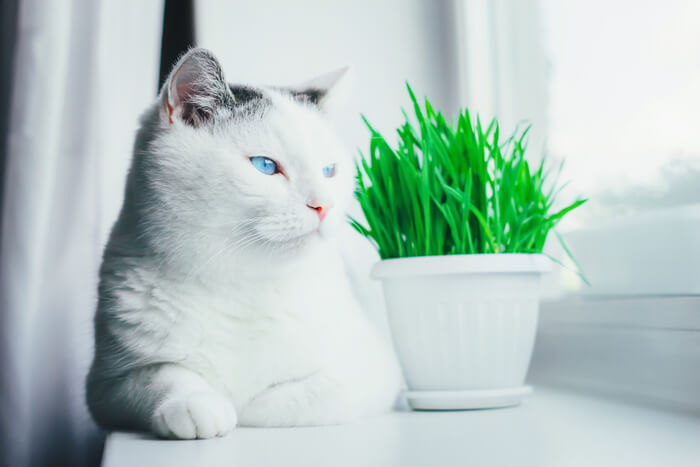
Water cat grass lightly and make sure it has exposure to indirect sunlight. Shutterstock.com
Keeping Your Cat Grass Healthy
The most important part of taking care of cat grass is making sure it doesn’t become moldy. Avoid overwatering the grass. Too much moisture is the main reason cat grass might begin to grow mold.
Inspect the cat grass daily for mold, and throw it away at the first sign of mold. Healthy, well-maintained cat grass lasts anywhere from one to three weeks. If the tips of the grass dry out and yellow a little, simply trim about 1 inch off the top of the grass.
Once the grass begins to wilt or turn yellow all over, it’s time to toss it. Always throw out any cat grass that develops mold.
Alternatives to Cat Grass
If you can’t find cat grass seeds, if your cat doesn’t seem to like cat grass, or if you simply want to try something different, consider planting catnip or a cat-safe herb garden. Catnip is easy to grow at home, and cats react to both fresh and dry catnip.
Starting a small herb garden on your windowsill can be stimulating for your cat and also keeps fresh herbs on hand for cooking. Some herbs are toxic to cats, only grow cat-safe herbs, including basil, rosemary, thyme, and parsley. Just be sure your cat only ingests herbs in small amounts—too many herbs might cause an upset stomach.
